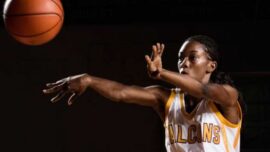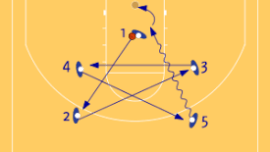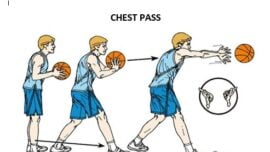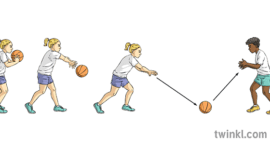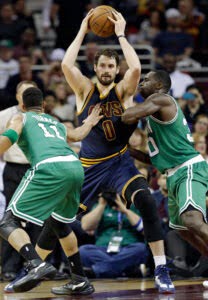Youth Basketball Passing Drills
Coaching youth basketball can be frustrating, no doubt, especially when you want to push ahead into some aspect of the game – strategy, perhaps, or more advanced offensive skills – but you find your players just don’t have a strong enough base of fundamental basketball skills to handle the more advanced skills.
Basketball Passing Drills not only improve your game but also Increase your point probability. If all players were taught basketball fundamentals properly from the beginning, life would be so much easier.
So many players, by the time they get to the varsity level, have picked up so many bad habits, from playing at the neighborhood basketball courts, from watching too much And One, or from simply never being taught the basics to begin with, that every year seems to begin with breaking bad habits and instilling good ones, introducing proper form when we should be extending already ingrained basketball skills.
Maybe passing is the most important offensive skill to teach, since everyone on the team needs to know how to pass well.
Not everyone will need to shoot well, especially if the player will be playing inside the key most time. And not everyone needs to be proficient at dribbling – as long as you have a couple of good ball handlers on the team, you should be good.
But every player needs to know how to pass the basketball properly because every player will need to pass the ball in every game.
Teaching Passing Basics
Start every season with a review of passing fundamentals. Break down the four main passes – chest pass, bounce pass, one-handed push pass, and overhead pass – demonstrate proper form for each to your players, and then set them up in some basic passing drills so you can watch their form and make changes wherever necessary.
Concentrate on proper fundamentals as you coach these drills – the more often they pass properly, the more their muscles learn how to pass and the more likely they will pass properly in the game.
Are good passing fundamentals important? You bet they are! If you want some proof, watch the NCAA. A good college ball can be a great teacher of basics done well.
Skip past the NBA unless you are looking for some entertainment – too many players in the pros have long ago forgotten good fundamentals and only focus on the highlight reel, although to press home the point if you check the lists of champs league and team MVPs in the NBA, you are less likely to find the flashy players and more likely to find names of players who use the basics exceptionally well.
Introducing Advanced Passing Drills For Youth
Once you have spent a couple of days focusing on basic basketball passing drills, hammering home good passing fundamentals, and you feel your players have a good grasp on basic passing skills.
The shuffle drill is a good extension of the basic drills listed above, and a good “middle ground” before introducing the three-man weave.
Another advanced drill that helps develop good fundamentals but also quickness and hand-eye coordination is the point passing drill (this is also a good drill to use before games, to get players warmed up on the sidelines.)
One More Drill
Since we are on the topic of passing drills to use during pre-game warm-ups, a half-court 3-man weave does a good job of getting players warmed up and in game mode.
There are versions of the weave in which everyone gets to shoot, which could be applied in pre-game warm-ups, but I prefer not to use them since they tend to be slower, and in the warm-up I want players to move a lot, to get loosened up and a little excited.
Chest pass
The chest pass is used primarily to advance the ball quickly from player to player. This pass must be made swiftly to your teammate because often, the opponent can read where you are passing it to, and they can intercept it.
- Never make a chest pass with both feet together. Treat it like a baseball throw; have one foot in front of the other in the direction of the pass. For example, if you are in the middle of the court and want to make a chest pass to the left, lead with your left foot. Vice versa if you want to make a pass to the right side.
- Place one hand on the side of the ball and one hand behind it. Bring the ball to chest height and snap the ball to your teammate.
Bounce pass
The bounce pass is more often used when a player is protecting the ball, or you are passing it to a protected player, or through traffic. This is the most accessible pass to execute with a fake before making the pass because you can make it quickly, and the fake draws the defender out of position.
- First, draw the defender away from your passing lane, then slip the bounce pass around them. The best fake is an overhead pass, then when they are in the air to block it, put the ball to the ground to your teammate.
- To ensure the most accessible pass reception by your teammate, try to bounce the ball two-thirds of the distance between you. This will likely present the ball to him at waist level – the most accessible place to accept a pass – either on the run or standing still.
- Don’t put a spin on the ball. Most players can’t see the ball’s spin in the heat of a game, and they can be thrown off by a ball that looks like it will appear at one place and then end up in another.
- Use two hands. Make sure you are in control of the ball. Hold the ball at the side with one hand and push with the other hand. Get used to passing with both hands so the non-passing side hand can protect the ball.
Here are some drills you can use to improve your passing skills. These drills, because you need a person to pass to in most cases, require more than one person to do. We will also provide some drills you can do independently to improve your passing drills.
Pig in the middle:
- Player 1 and Player 2 stand 3-4 meters apart. Player 1 has the ball. Player 3 is the defensive player and stands between players 1 and 2.
- Player 3 guards Player 1 and tries to deflect the pass from Player 1 to Player 2.
- Player 1 works on ball fakes and steps through the defense to make the pass.
- When player 2 receives the ball, player 3 hustles over to contest player 2’s pass to player 1. Player 2 must wait until player three is on him before he attempts a pass.
- Player 3 stays in the middle and defends both passes until he gets three deflections.
- Players rotate so that all three defend the passes.
Downcourt passing
Two players stand on either side of the key, about 12 feet apart. Shuffling down the court, the players pass to one another every two to three steps, making sure they lead the other player down the court. You can do this drill with the chest pass, bounce pass, overhead, or baseball pass. Shuffle from one end of the court to another, exchanging passes.
Here’s a drill you can do on your own:
Pass against the wall
You can use a regular brick wall or anything else sturdy enough to prevent any give when you throw the ball against it. Those are the best places to do this drill if you have a schoolyard with a brick wall nearby where you can play or a gymnasium wall.
- Stand about 12 to 15′ away from the wall and get into a standard stationary passing position.
- Either chest passes or bounce passes the ball against the wall.
- If you use the chest pass, the ball should return to you at the same height and speed as you sent it to the wall. With the bounce pass, make sure you bounce it two-thirds of the way to the wall and with enough velocity to receive the pass in the air at waist height. With either pass, if executed correctly in the drill, you should receive the ball at the proper spot you should be passing to.
- Just like anything, repetition makes this drill the most effective.
The Dish
This pass has been around for decades and perfected by the best who drive to the hoop.
The dish-off is a pass dropped off to a player by a player driving to the hoop. It is a valuable play in today’s basketball, and any player who takes the ball to the hole often should know how to ensure their pass’s success rate is high.
First, when you drive to the hoop, look at your options before you take your first step. Do you have anyone in the key waiting for a dump-off? Is anyone crashing the boards you can dish to? Are you prepared to take the shot if no one is under the hoop to take the pass?
Going in with a plan is the biggest priority in ensuring this pass works. Identify whom you are going to pass to, then drive accordingly. Always be prepared to make the shot.
Too many players drive to the hoop looking to dish the ball off, and when the defense reads that there is no intention to take the shot, they sit back and wait for you to dump the ball off to the side. Take the ball to the hoop – hard like you would if you were trying to score.
You need a player nearby who knows what you are up to. If they are under the hoop and waiting to watch you drive, they are the perfect person to dish the ball off to. It only makes sense that it will be stolen if no one is under the hoop to take the pass.
Never use the dish-off to save yourself from missing a shot. Many players who play out of control and drive to the hoop use the dish-off as a last resort when they can’t get the shot off.
If you do this, you risk putting your team in a precarious defensive position because you made a foul play. Always know what you are doing, be in control, and take the ball to the hoop as you mean it, but always go ahead knowing if you can dish it to a teammate.
Passing is basketball’s second most crucial aspect in ensuring a team’s success. You will always hear coaches talk about unforced errors and turnovers costing them the big game.
Don’t be the player who costs your team the game by not knowing and understanding the importance of passing and then practicing it.
A Few Final Points
You may want to check out this great package of drills demonstrated by a very successful coach as well, to add to your arsenal of fundamental drills.
Stay focused on fundamentals – you have to be constantly tweaking your players’ skills, teaching and pushing them to perform better.
And it needs to happen at every practice because it’s muscle memory you want – players can’t be thinking about how to shoot or pass properly when they are in the middle of the game – it has to come second nature.
Even if a player doesn’t possess qualities like aggression and intuitive play – qualities that are necessary to become a great player – he can still learn good form and become proficient at performing the skills necessary to play the game well and contribute effectively to the team effort.
Focus on proper form in these drills and ingrain the movements in your players’ muscles and minds, and maybe next season won’t begin with habit-breaking.
Related Drills

